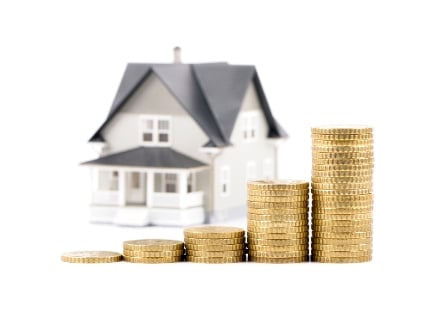“Housing is not repeating the bubble period of 2000-2006,” says S&P director

House prices in May rose from both a month and a year ago, according to two national indexes.
The Fair Housing Finance Agency’s House Price Index showed a 0.4% increase in US house prices in May, from the 0.6% increase in April, which is a downward revision of the previously reported 0.7% increase. On a year-over-year basis, house prices grew 6.9% in May. The index is calculated using home sales price information from mortgages sold to, or guaranteed by, Fannie Mae and Freddie Mac.
Meanwhile, the S&P CoreLogic index reported a 5.6% annual gain in May, the same as the prior month’s gain. The annual increase for the 10-City Composite was 4.9%, lower than the 5.0% in April, and the 20-City Composite saw an annual increase of 5.7%, a decrease from the 5.8% increase seen a month ago.
Of the 20 cities in the index, the highest gains were reported in Seattle, Portland and Denver. An increase of 13.3% was seen in Seattle, followed by an 8.9% gain in Portland and 7.9% growth in Denver. Higher price increases were seen in nine cities for the year ending May 2017 compared to the year ending April 2017.
On a monthly basis, the S&P Corelogic index posted a 1.0% gain in May, before seasonal adjustment. The increase was 0.7% for the 10-City Composite and 0.8% for the 20-City Composite. On a seasonally adjusted basis, the index posted an increase of 0.2%, with the 10-City Composite unchanged and the 20-City Composite with a 0.1% increase. Twenty cities posted monthly increase before seasonal adjustment, while only 14 saw prices increase after adjustment.
"Home prices continue to climb and outpace both inflation and wages," said David Blitzer, managing director and chairman of the index committee at S&P Dow Jones Indices. "Housing is not repeating the bubble period of 2000-2006: price increases vary across the country unlike the earlier period when rising prices were almost universal; the number of homes sold annually is 20% less today than in the earlier period and the months' supply is declining, not surging. The small supply of homes for sale, at only about four months' worth, is one cause of rising prices. New home construction, higher than during the recession but still low, is another factor in rising prices.”
Related stories:
Housing bubble unlikely despite affordability issues says Arch MI
These cities saw house prices fall in spite of national trend
The Fair Housing Finance Agency’s House Price Index showed a 0.4% increase in US house prices in May, from the 0.6% increase in April, which is a downward revision of the previously reported 0.7% increase. On a year-over-year basis, house prices grew 6.9% in May. The index is calculated using home sales price information from mortgages sold to, or guaranteed by, Fannie Mae and Freddie Mac.
Meanwhile, the S&P CoreLogic index reported a 5.6% annual gain in May, the same as the prior month’s gain. The annual increase for the 10-City Composite was 4.9%, lower than the 5.0% in April, and the 20-City Composite saw an annual increase of 5.7%, a decrease from the 5.8% increase seen a month ago.
Of the 20 cities in the index, the highest gains were reported in Seattle, Portland and Denver. An increase of 13.3% was seen in Seattle, followed by an 8.9% gain in Portland and 7.9% growth in Denver. Higher price increases were seen in nine cities for the year ending May 2017 compared to the year ending April 2017.
On a monthly basis, the S&P Corelogic index posted a 1.0% gain in May, before seasonal adjustment. The increase was 0.7% for the 10-City Composite and 0.8% for the 20-City Composite. On a seasonally adjusted basis, the index posted an increase of 0.2%, with the 10-City Composite unchanged and the 20-City Composite with a 0.1% increase. Twenty cities posted monthly increase before seasonal adjustment, while only 14 saw prices increase after adjustment.
"Home prices continue to climb and outpace both inflation and wages," said David Blitzer, managing director and chairman of the index committee at S&P Dow Jones Indices. "Housing is not repeating the bubble period of 2000-2006: price increases vary across the country unlike the earlier period when rising prices were almost universal; the number of homes sold annually is 20% less today than in the earlier period and the months' supply is declining, not surging. The small supply of homes for sale, at only about four months' worth, is one cause of rising prices. New home construction, higher than during the recession but still low, is another factor in rising prices.”
Related stories:
Housing bubble unlikely despite affordability issues says Arch MI
These cities saw house prices fall in spite of national trend



